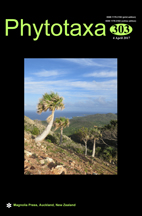Abstract
A taxonomic study of the fern genera Austroblechnum, Cranfillia, Neoblechnum, Lomaridium, and Telmatoblechnum, formerly Blechnum s.l. (Blechnaceae, Polypodiopsida), was conducted in southern and southeastern Brazil (Minas Gerais, Espírito Santo, Rio de Janeiro, São Paulo, Paraná, Santa Catarina, and Rio Grande do Sul) and 11 species were recognized (six of Austroblechnum, two of Cranfillia, one of Neoblechnum, one of Lomaridium, and one of Telmatoblechnum). One species has a circum-Antarctic distribution (plus Mexico), three species have a broadly Neotropical distribution, six species are restricted or almost restricted to South America and one is endemic to Brazil. New records are presented for six species in states from southeastern Brazil, in other regions of the country, as well as in other countries. Taxonomic descriptions, synonymies, lectotypifications, geographical distributions, and comments are presented for all genera and species occurring in the study area. We also give keys for the identification of Brazilian genera of Blechnaceae and for species of the genera treated here.

